Tianbao Mini Host + Deepin OS, Creating My Own Development Environment (Multiple Images)
Publish: 2021-02-28 | Modify: 2021-02-28
In 2016, I bought a Zhānměi mini host (Zhānměi mini host unboxing experience, compact and practical), which is still serving me well today. However, due to its low configuration, it cannot run some large applications. Recently, I got a new mini PC to use as a development machine.
Intel NUC is a good choice, and it can also run Hackintosh, but it is not cost-effective. So I searched online and found a small host with an AMD CPU, which is today's protagonist, the Tiānbǎo MN25. It is much cheaper than the Intel NUC, and after comparing them, I finally bought the Tiānbǎo MN25 barebone version (without memory + hard drive). Let me show you a picture of the desktop.

About Tiānbǎo MN25
To be honest, I searched online for a long time but couldn't find any introduction or official website for the Tiānbǎo brand. There are also very few reviews of the Tiānbǎo host, but I was surprised to find that there are foreigners doing reviews of the Tiānbǎo host on YouTube. So I can't really tell if "Tiānbǎo" is a domestic or foreign brand. But it doesn't matter as long as it works fine.
I bought the R5-3500U barebone version, without memory and hard drive, for around 1700. You can refer to the following image for the configurations of other versions.
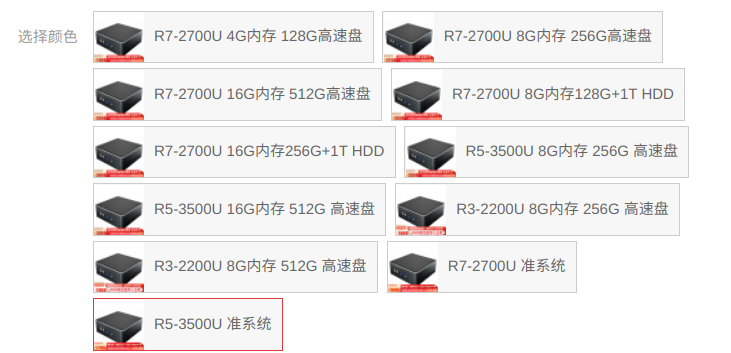
Purchase link: https://u.jd.com/iPjTiba
MN25 Unboxing
The seller shipped it via SF Express, and it arrived in 3 days. It came with a mouse, mouse pad, and Ethernet cable as free gifts, but the mouse is very useless, too small to use. But I didn't have high expectations for the free gifts, so let me show you some unboxing pictures.

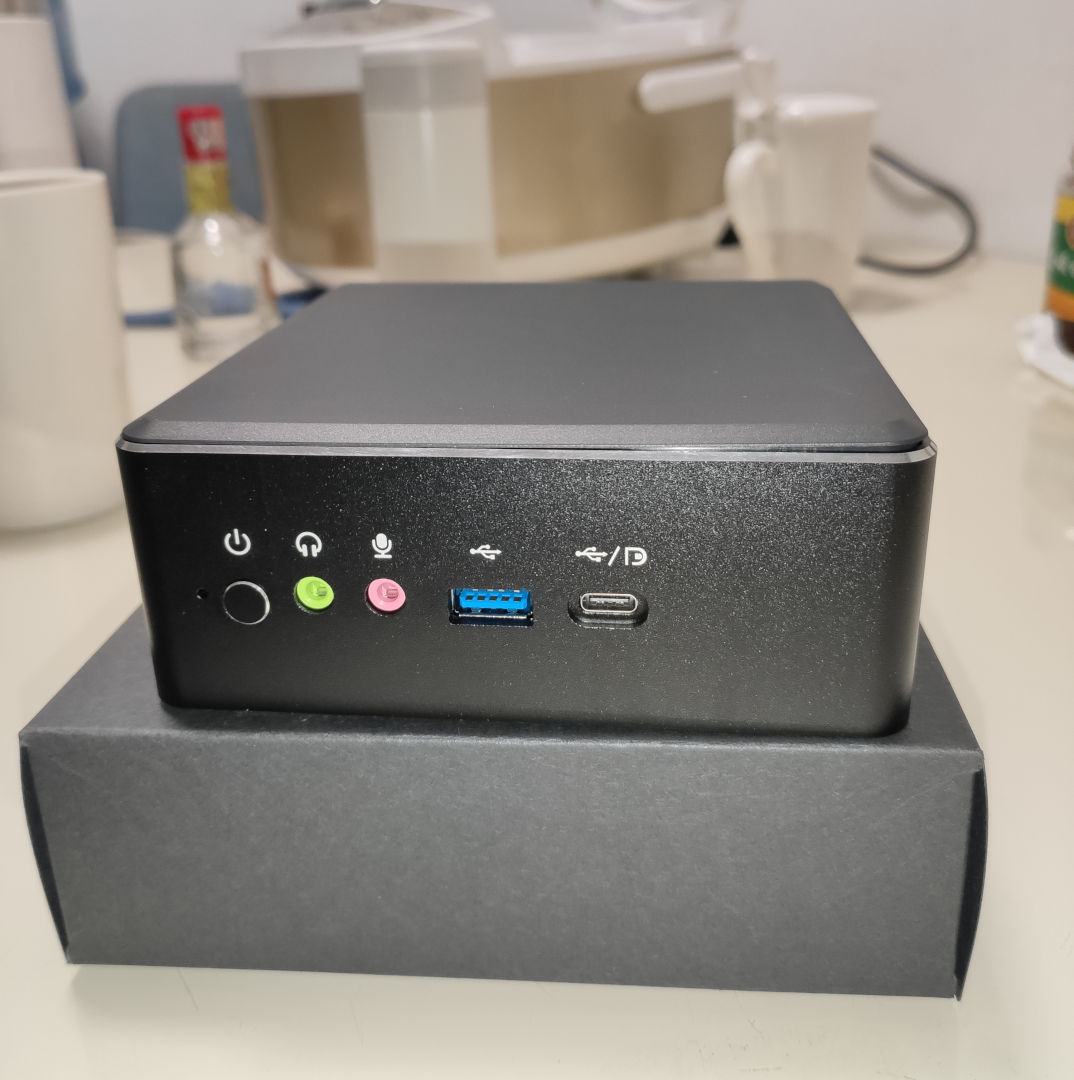
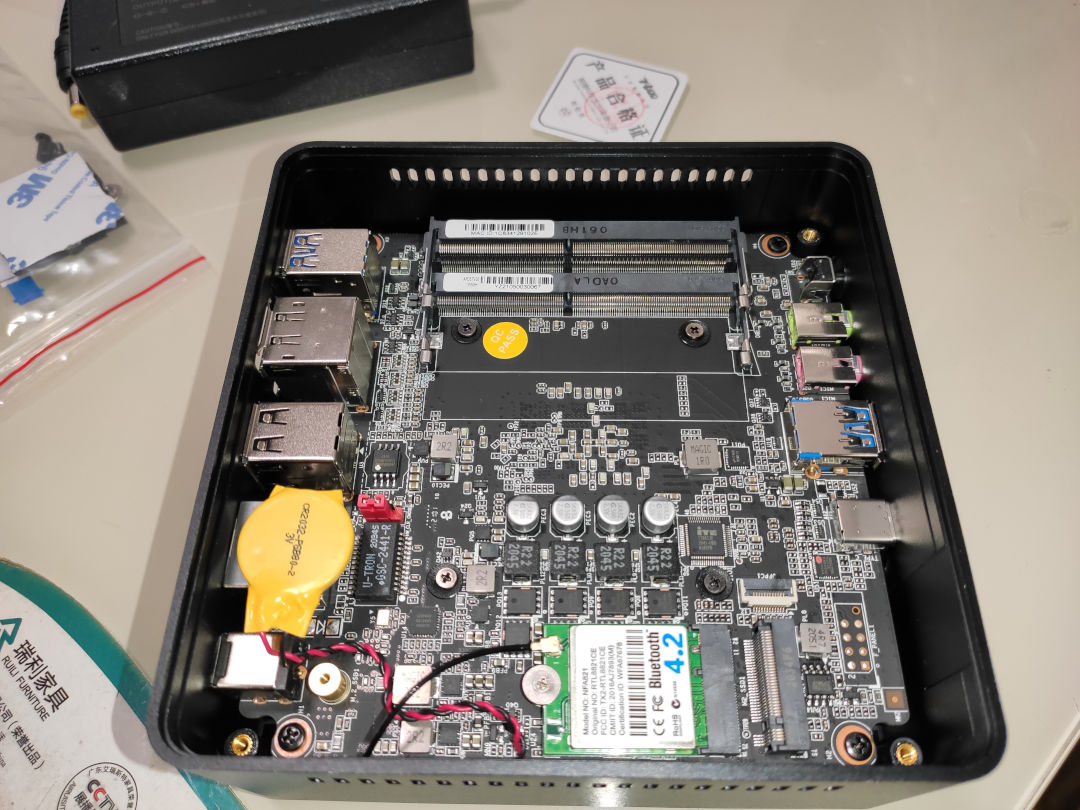
The barebone version doesn't come with memory and hard drive, so I bought two 8GB memory sticks and a 500GB SSD from JD.com. I randomly chose a domestic brand for the memory stick, mainly because of its lifetime warranty (and also because I'm not rich). If you have the budget, you can go for better memory sticks. Here are the links to the memory stick and SSD I bought:

But I have to complain about the packaging design of the KINGBANK memory stick. It's very difficult to open, and you need to apply a lot of force, which might break the memory stick. Fortunately, installing the memory and SSD in the MN25 is much easier. Here is a screenshot of the installed memory and SSD.

Since I'm using it as a development machine, I chose the Linux operating system. There are many Linux desktop options, and I chose Deepin because of its aesthetics and convenience. I used the Ventoy tool to install Deepin in one go (I won't go into detail about the installation process). Here is a screenshot of the configuration.
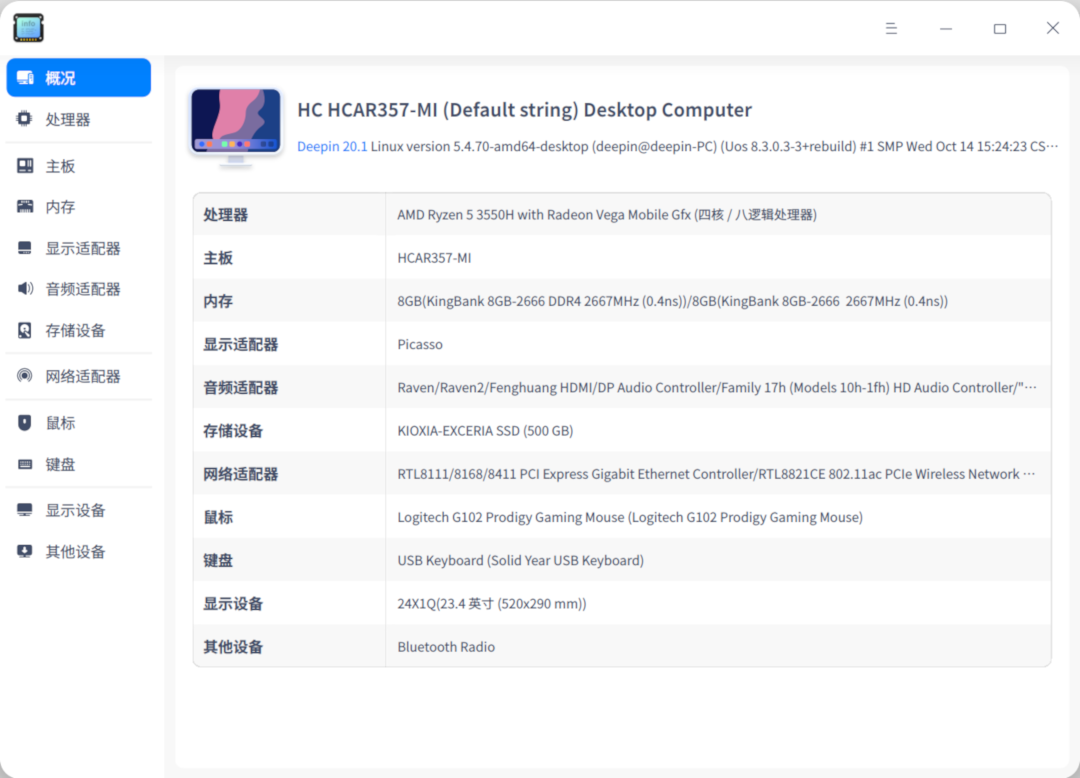
I want to mention that I chose the R5-3500U, but after booting up, I found that it was actually the 3550H. The 3550H has the same specifications as the 3500U, but with slightly higher power consumption and slightly better performance. I guess I got lucky, haha.
Here are some of the configuration parameters:
- CPU: AMD Ryzen 5 3550H
- Memory: KINGBANK 8GB DDR4 2666 * 2 (16GB)
- Hard Drive: Kioxia 500GB SSD (NVMe)
- Operating System: Deepin V20.1
- Host Size: 12.8cm x 12.8cm x 5cm
- Video Interface: DP x 1, HDMI x 1
- USB Interface: 3.0 x 4, 2.0 x 2
Simple Review
Since Deepin doesn't have benchmarking software like Lu (Entertainment) Master, I used another benchmarking software called "Antutu Benchmark" for reference. The score is around 380,000, but benchmarking software is just for entertainment and doesn't have much practical significance.
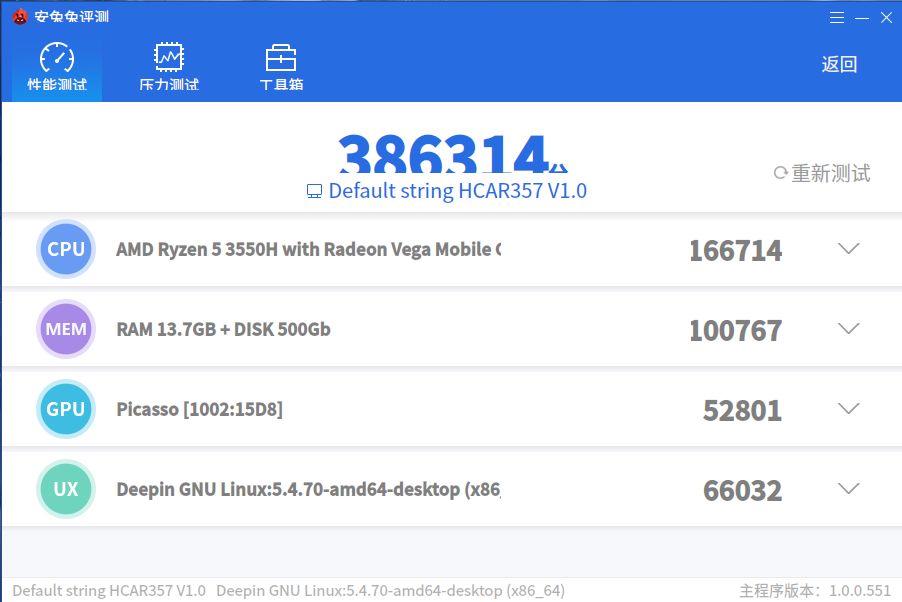
There are fewer games available on Linux compared to Windows, but I installed Dota 2 through Steam and played it smoothly at 2K resolution with medium settings, with an FPS of around 40-80.
I also tested the average I/O using bench.sh, and the result was around 980.0 MB/s.

About Software
Deepin has been developing Linux desktops for over 10 years, and it deserves recognition for its out-of-the-box experience. The application store provides a large number of commonly used software, and the interface is beautifully designed. Here are two screenshots of my desktop (click on the images to enlarge).


Deepin Experience
The last time I used Deepin was version 15, and now it has been updated to version 20.1. The usability has improved compared to before, and the interface is as beautiful as ever.
Stability:
However, in terms of stability, I personally feel that it is not as good as Windows. There is a very low probability of the taskbar or interface freezing, and I'm not sure if it is related to the hardware.
Drivers:
Since hardware varies among different manufacturers, and Linux desktop users are relatively few, many manufacturers do not develop drivers for Linux systems. Therefore, driver compatibility can be a headache on Deepin. So if you plan to use Deepin, make sure to do some research in the forums in advance to check if your hardware is compatible (most should be).
Software:
The application store provides most of the commonly used software, and for software that doesn't support Linux systems, you can use Wine to run them. If the software supports Linux systems, it is recommended to download it from the official website, as the software in the store is usually not the latest version. As for me, as a developer, there are no issues with development software on Linux, but many entertainment software may not be available.
The "malware" software on Windows becomes honest software on Linux. For example, the Linux version of Xunlei (Thunder) doesn't have any bundling or ads.
Gaming:
Steam released a Linux version a few years ago, and now you can install games that support Linux systems from the Steam store, such as Dota 2 and CS:GO. I also successfully installed "StarCraft II" using the WINE game assistant and it works fine. So gaming on Deepin is completely possible, but the gaming experience is not as good as on Windows. If you are a heavy gamer, it's better to stick with Windows.
Conclusion
The Tiānbǎo MN25 is compact and doesn't take up much space, and it has plenty of interfaces. The 3550H CPU is considered average among laptop CPUs, and it is more than capable of handling office work, entertainment, development, and playing some ordinary games (AMD YES!). I am very satisfied with this setup.
Comments

xiaoz
I come from China and I am a freelancer. I specialize in Linux operations, PHP, Golang, and front-end development. I have developed open-source projects such as Zdir, ImgURL, CCAA, and OneNav.
Random article
- Building a Poste Mail Server with Docker
- Free AI Drawing Tool Driven by Stable Diffusion Technology: Experience getimg.ai Online
- Eurasia Cloud: July Restocking Sale, 25% off site-wide, $21/month; CN2 GIA/9929/2h/2g/50 bandwidth/1000g traffic
- Commonly Used File Operation Functions in PHP
- RAKsmart Three American VPS Specials, as low as 9.9 yuan/month (with review)
- Parallels: A RDP Client Tool Supporting Socket5 and HTTP Proxies
- Alibaba Cloud Promotion: New and Existing Users Can Register a Domain for 29 RMB
- Ditto: Boosting Efficiency with Windows Clipboard Tool
- VNote: A Markdown Note Perfect for Programmers
- Alibaba Cloud (International Edition) Singapore VPS starting from $4.5/month, with basic testing included